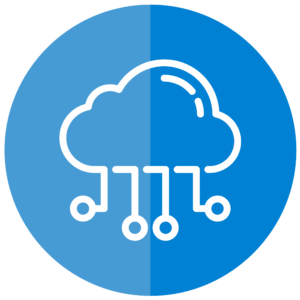Entering 2025, the landscape of healthcare technology is experiencing one of its most dramatic upheavals in a long time. Mobile-first systems aren’t just optional—they are fundamental to the very nature of how patients receive treatment, how healthcare providers deliver care and how the entire health care ecosystem evolves.
Smartphones are increasingly being used as medical assistants (helping doctors and patients with health checks), diagnostic enablers, and communication bridges, the HealthTech sector is progressively focusing on mobile innovations that enhance access, efficiency and results.Driven by proliferation of high-end sensors on mobile devices, remote monitoring solutions, real-time health analytics and the growing impact of AI in healthcare, this transition is here to stay. Both patients and healthcare providers now expect care delivery to be as convenient and easy to use as mobile banking or online shopping – for the first time in history.
So, the HealthTech organizations, Hospitals and Digital leaders are now moving ahead with mobile-first development strategies that will define the future of healthcare industry trends to look out for in 2025 and beyond.
The Mobile-First Wave Over Healthcare Frontlines
In previous years health applications were often for simple tasks such as making an appointment or tracking wellness. But 2025 brings a new era, since mobile systems will be built to handle intricate medical workflows, diagnoses, and even remote treatment. This new wave of healthcare technology allows for anything from AI-based symptom checking, to medication adherence tools, and mobile devices have been put at the center of today’s health care innovation.
Mobile First Design The mobile-first systems are now so embedded in hospitals and clinics that providers can now remotely monitor patients, pull up medical histories on the spot and talk to specialists without delay. These tools have turned drudgery into simplified digital workflows, enabling clinicians to spend more time on decisions and less time on documentation. As the next wave of healthcare industry trends comes into focus, mobile platforms are expected to emerge as the dominant means through which care teams engage and respond to patient demands.
AI-Powered Mobile Care: The Rise of Intelligent Diagnostics
Certainly the biggest thing disrupting healthcare in 2025 is the even-closer conjunction of artificial intelligence in health care with mobile-first design. AI-enabled mobile applications can now be used to make triage decisions, recognize health risks, detect early signs of chronic diseases, and even analyze patient-generated data from wearable devices. These advances allow for more accurate diagnoses, while making medical care more convenient and personalized.
Envision a patient speaking into a mobile application that analyzes breath rhythms. Or a diabetes management tool that leverages smartphone camera technology to identify changes in the skin associated with glucose levels. These are a few examples of how mobile-enabled AI in health care is transforming early detection and prevention. Such tools take the strain off busy clinics and make for better care delivery, particularly in areas where doctors are scarce – a boon for health providers. In turn, patients also get the benefit of earlier intervention and more confidence in their decisions about symptoms.
Mobile- Enabled Home Health Care Services Is Poised for Growth
One more promising trend watching for healthcare is the rapid growth of home health care services as supported through digital solutions. With aging populations, higher chronic illness rates and healthcare cost inflation, the worldwide system is moving care provision from hospitals to homes. Moving ahead to 2025, mobile-first applications are allowing families, nurses, and doctors to work together in caring for patients at home.
Mobile devices enable caregivers to monitor vital signs, administer medication, and contact healthcare providers—without the need to come into the office. These advances make a world of difference for seniors or those who are limited in their mobility. The trend also gives a quicker response to change in health state for doctors, enabled by real-time data of mobile and wearable derived from these devices.This is a huge opportunity for HealthTech companies. Building mobile-first platforms specifically for home health care services — whether fall-detection systems, remote patient monitoring dashboards or tele-nursing solutions — will be critical in 2025 as delivery of care becomes decentralized and home-based.
The Era of the Connected Patient: Mobile Apps as Care Companions
Year 2025 is a milestone now, where the patient is no longer a passive consumer of healthcare services but an active participant in their care journey. With the advancements in healthcare technology, mobile apps have become personal care companions, providing reminders, customized insights, and on-demand health coaching. This allows people to take a more proactive approach to their health care routines, leading to greater adherence and better long-term results.
For instance, mobile applications can lead patients through physical therapy routines with motion tracking in real time, alert them to harmful drug interactions or offer mental health assistance via AI-powered conversation tools. These are raising patient expectations and putting more pressure on healthcare providers to keep pace with mobile-centric approaches to foster trust and engagement. Healthcare practitioners not only track patient progress with these platforms but also are able to observe and comprehend patterns of health in day-to-day life, as opposed to sporadic visits to a clinic. This is one of the most helpful health industry trends as continual, mobile-enabled interaction can improve preventative care and cut down on hospital readmissions.
Enhancing Clinical Workflows Using Mobile Decision Support
Besides patient-oriented capabilities, mobile-first platforms are boosting clinical decision-making. At the high pace hospital care level, providers have traditionally depended on quick access to information to inform diagnosis, treatment, and patient management. Mobile-first platforms now bring AI-driven decision support to doctors, allowing them to access guidelines, check for drug interactions, protocols for treatments, and diagnostic insights — all from their phones.
This real-time support makes it possible for clinicians to promptly treat critical patients or difficult situations and at the same, help minimize mistakes in the clinic. With workload increasing and staff dwindling, mobile decision support systems are becoming vital throughout the health care ecosystem. But added innovations are on the way: in 2025, as more hospitals adopt mobile-first clinical systems, clinicians, nurses and specialists will collaborate in real time — from anywhere. They streamline processes, minimize delay and break up the data siloes that typically block medical teams.
Personalized Care Through Real-Time Mobile Analytics
Predictive analytics and Big Data are empowering mobile healthcare apps to pinpoint patient needs and deliver personalized care plans based on real-time data analytics. Mobile-first apps using predictive analytics are driving the next wave of health technology. Mobile applications use trends, behaviors and real time information to be one step ahead the needs of the patients, ready to assist them before any potential problem arises.
Multi-scale modeling techniques combined with increasing artificial intelligence in health care capabilities for predictive healthcare let doctors intervene before the development of complications requiring hospital treatments. This makes financial sense for healthcare providers, who now can avoid expensive emergency interventions, and (proactive care) leads to better patient satisfaction. Mobile-first predictive analytics will be a key investment for HealthTech companies in 2025, as the focused need for personalised health care continues to grow.
Storytelling: A 2025 HealthTech Success Story
How can story telling help? Imagine a regional hospital system with long wait times, high readmission rates, and overworked staff. Identifying the changing healthcare industry trends, they joined forces with a digital innovation company to create a mobile-first platform that combines triage, telehealth, and home surveillance. It took information technology a year to make that information actionable. The following year, hospital readmissions decreased by 32%, patient satisfaction soared, and healthcare professionals spent more time on direct patient care rather than on administrative duties. The development of mobile applications for home health care services established an entirely new standard of care- demonstrating how rapidly mobile-first applications have the power to transform medical networks.
A Call to Action for Health Tech Leaders
As 2025 begins, the takeaway is clear: mobile-first development is not a fad—it is now the basis for global health care and communication. From streamlining hospital flows to allowing at-home care to revolutionizing diagnostics to assisting healthcare workers, mobility is reshaping both patient experiences and clinical results.
HealthTech companies that capitalize on these trends will dominate the next decade of healthcare technology innovation. Through embracing artificial intelligence in health care, focusing on real time interaction, and evolving with the needs of healthcare professionals, companies can develop meaningful solutions that improve care delivery, salvar vidas, and fortify the global healthcare system. For those who want to design the health of the future now is their chance. Build smarter. Go mobile-first. Empower the next era of care.














